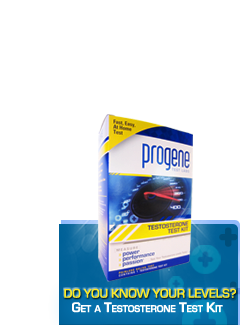CLINCAL DATA
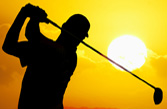
As you age, testosterone production is known to drop by 1-2% each year. It's a natural process in men that can lead to decreased physical performace and lower energy levels.
If you're feeling less drive and motivation, lower energy levels, less results at the gym or even lower sexual interest, Progene's unique dual action formula might be able to help you get back what you've lost.
Testosterone, it's what makes a man, a Man!

AGE, TESTOSTERONE AND MALE LIBIDO
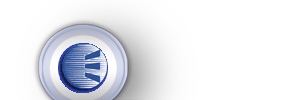
Men lose the ability to produce testosterone by 1-2% per year as they age. Testosterone is a key hormone and the effects of lower levels can be significant and wide ranging.
The Journal of Clinical Endocrinology & Metabolism Longitudinal Effects of Aging on Serum Total and Free Testosterone Levels in Healthy Men Click here to download
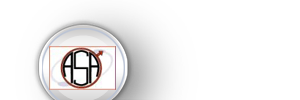
Journal of Andrology
Testosterone, Sexuality, and Erectile Function in Aging Men
Click here to download

National Public Radio
Testosterone Supplements can be safe
Listen
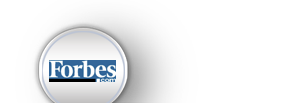
Forbes.com
Testosterone Down, Death Risk Up
Click here to download
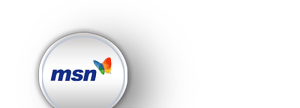
MSN Health and Fitness
Men, Boost Your Libido!
Click here to download
PRO-HORMONAL INGREDIENTS
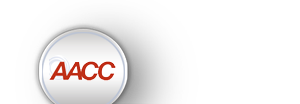
Progene's dual-action formula contains clinically proven, testosterone precursors as a base ingredient for the body to metabolize into testosterone and herbal extracts known to support this process.
DHEA
Progene contains DHEA, which serves as a testosterone precursor. American Association for Clinical Chemistry Inc published their research paper on how Oral Dehydroepiandrosterone (DHEA) increases testosterone production.
Click here to download
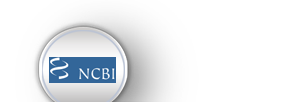
Long Jack
Tongkat ali, as testosterone booster for managing men with late-onset hypogonadism.
Click here to download
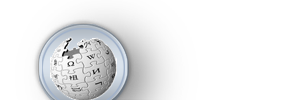
Tribulus Terrestris
This post and compiled articles on Wikipedia regarding Tribulus, reflects on its use as a dietary supplement through the ages and its reported popularity for use as a Testosterone Booster in Europe and the Americas.
Click here to download

Muira Puama (ptychopetalum olacoides)
In muirapuama, chemists have identified a group of sterols including beta-sitosterol, thought to be responsible for the herb's aphrodisiac effects.
Click here to download
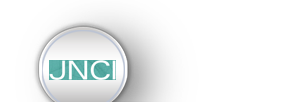
Lycopene: Findings suggest that intake of lycopene or other compounds in tomatoes may reduce prostate cancer risk...
The Journal of the National Cancer Institute says you can significantly lower the risk of prostate cancer with the Lycopene.
Click here to download

L-Arginine: Oral arginine attenuates the growth hormone response to resistance exercise
L-Arginine, an essential amino acid found in Progene, has been found to be active in the modulation of hormone production. In particular, one study notes the influence of L-Arginine and increased levels of Growth Hormone.
Click here to view
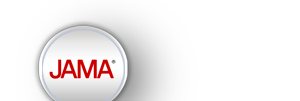
Saw Palmetto Extracts for Treatment of Benign Prostatic Hyperplasia
According to the Journal of the American Medical Association, the Saw Palmetto found in Progene fights and markedly improves difficulties with urination. Some countries regard Saw Palmetto as the "gold standard" against which new prostate drugs must prove themselves!
Click here to download
REFERENCES:
1 Arginine, evidence-based monograph, available at http://www.mayoclinic.com/health/l-arginine/NS_patient-arginine
2 Ornithine Biosynthesis. School of Biological and Chemical Sciences, Queen Mary, University of London
3 Arginine. (2010). In Mosby's Handbook of Herbs & Natural Supplements. Retrieved from http://www.credoreference.com/entry/ehsmosbyherbs/arginine
4 Ang HH, Sim MK. Eurycoma longifolia Jack enhances libido in sexually experienced male rats. J Exp Anim Sci 1997;46:287–90.
5 Ang HH, Ngai TH. Aphrodisiac evaluation in non-copulator male rats after chronic administration of Eurycoma longifolia Jack. Fundam Clin Pharmacol 2001;15:265–8.
6 Ang HH, Lee KL, Kiyoshi M. Eurycoma longifolia Jack enhances sexual motivation in middle-aged male mice. J Basic Clin Physiol Pharmacol 2003;14:301–8.
7 Ang HH, Lee KL, Kiyoshi M. Sexual arousal in sexually sluggish old male rats after oral administration of Eurycoma longifolia Jack. J Basic Clin Physiol Pharmacol 2004;15:303–9.
8 Ang HH, Ngai TH, Tan TH. Effects of Eurycoma longifolia Jack on sexual qualities in middle aged male rats. Phytomedicine 2003;10:590–3.
9 Saw Palmetto. (2010). In Mosby's Handbook of Herbs & Natural Supplements. Retrieved from http://www.credoreference.com/entry/ehsmosbyherbs/saw_palmetto
10 Leonard S. Marks, Et Al, Effects Of A Saw Palmetto Herbal Blend In Men With Symptomatic Benign Prostatic Hyperplasia, The Journal of Urology, Volume 163, Issue 5, May 2000, Pages 1451-1456, ISSN 0022-5347, 10.1016/S0022-5347(05)67641-0.
11 Glenn S. Gerber, Saw Palmetto For The Treatment Of Men With Lower Urinary Tract Symptoms, The Journal of Urology, Volume 163, Issue 5, May 2000, Pages 1408-1412, ISSN 0022-5347, 10.1016/S0022-5347(05)67631-8.
12 Michel MC, Goepel M: Treatment Satisfaction of Patients with Lower Urinary Tract Symptoms: Randomised Controlled Trials vs. Real Life Practice. Eur Urol 2000;38(suppl 1):40-47
13 Iguchi, K., Okumura, N., Usui, S., Sajiki, H., Hirota, K. and Hirano, K. (2001), Myristoleic acid, a cytotoxic component in the extract from Serenoa repens, induces apoptosis and necrosis in human prostatic LNCaP cells. The Prostate, 47: 59–65. doi: 10.1002/pros.1047
14 Damiana. (2010). In Mosby's Handbook of Herbs & Natural Supplements. Retrieved from http://www.credoreference.com/entry/ehsmosbyherbs/damiana
15 Arletti, R., Benelli, A., Cavazzuti, E., Scarpetta, G., Bertolini, A., Stimulating property of Turnera diffusa and Pfaffia paniculata extracts on the sexual behavior of male rats, Psychopharmacology, 1999-03-18, Springer Berlin / Heidelberg, Issn: 0033-3158, Biomedical and Life Sciences, 143:1:15-19, http://dx.doi.org/10.1007/s002130050913
16 Ginger. (2010). In Mosby's Handbook of Herbs & Natural Supplements. Retrieved from http://www.credoreference.com/entry/ehsmosbyherbs/ginger
17 N. Mascolo, R. Jain, S.C. Jain, F. Capasso, Ethnopharmacologic investigation of ginger (Zingiber officinale), Journal of Ethnopharmacology, Volume 27, Issues 1–2, November 1989, Pages 129-140, ISSN 0378-8741, 10.1016/0378-8741(89)90085-8. http://www.sciencedirect.com/science/article/pii/0378874189900858
18 Clive V. Denyer, Peter Jackson, David M. Loakes, Malcolm R. Ellis, and David A. B. Young. Isolation of Antirhinoviral Sesquiterpenes from Ginger (Zingiber officinale). Journal of Natural Products, 1994, 57(5), 658-662. http://pubs.acs.org/doi/abs/10.1021/np50107a017
19 Guohua Cao, Helaine M. Alessio, Richard G. Cutler, Oxygen-radical absorbance capacity assay for antioxidants, Free Radical Biology and Medicine, Volume 14, Issue 3, March 1993, Pages 303-311, ISSN 0891-5849, 10.1016/0891-5849(93)90027-R. DOI: 10.1016/S0278-6915(00)00019-3 http://www.sciencedirect.com/science/article/pii/089158499390027R
20 Ahmed, R. S., Seth, V., Pasha, S. T., & Banerjee, B. D. (2000). Influence of dietary ginger (Zingiber officinales Rosc) on oxidative stress induced by malathion in rats. Food and Chemical Toxicology, 38(5), 443-450. ISSN: 0278-6915. http://journals.ohiolink.edu.proxy.libraries.uc.edu/ejc/article.cgi?issn=02786915&issue=v38i0005&article=443_iodgorsibmir
21 John P. Melnyk, Massimo F. Marcon., Aphrodisiacs from plant and animal sources—A review of current scientific literature, Food Research International, Volume 44, Issue 4, May 2011, Pages 840-850, ISSN 0963-9969, 10.1016/j.foodres.2011.02.043. (http://www.sciencedirect.com/science/article/pii/S0963996911001451)
22 Shamloul, R. (2010). Natural aphrodisiacs. The Journal of Sexual Medicine, 7(1), 39−49. http://www.ncbi.nlm.nih.gov/pubmed/19796015
23 Waynberg, J. (1994). Yohimbine versus muira puama in the treatment of sexual dysfunctions. American Journal of Natural Medicine, 1, 8−9.
24 Ginseng. (2010). In Mosby's Handbook of Herbs & Natural Supplements. Retrieved from http://www.credoreference.com/entry/ehsmosbyherbs/ginseng
25 John P. Melnyk, Massimo F. Marcone, Aphrodisiacs from plant and animal sources—A review of current scientific literature, Food Research International, Volume 44, Issue 4, May 2011, Pages 840-850, ISSN 0963-9969, 10.1016/j.foodres.2011.02.043. http://www.sciencedirect.com/science/article/pii/S0963996911001451
26 Le Gal, M., Cathebras, P. and Strüby, K. (1996), Pharmaton capsules in the treatment of functional fatigue: A double-blind study versus placebo evaluated by a new methodology. Phytotherapy Research, 10: 49–53. doi: 10.1002/(SICI)1099-1573(199602)10:1<49::AID-PTR772>3.0.CO;2-M
27 Taik-Koo Yun and Soo Yong Choi. A Case-Control Study of Ginseng Intake and Cancer. Int. J. Epidemiol. (1990) 19(4): 871-876 doi:10.1093/ije/19.4.871
28 Ginseng. (2010). In Mosby's Handbook of Herbs & Natural Supplements. Retrieved from http://www.credoreference.com/entry/ehsmosbyherbs/ginseng
29 Oats. (2010). In Mosby's Handbook of Herbs & Natural Supplements. Retrieved from http://www.credoreference.com/entry/ehsmosbyherbs/oats
30 Nettle. (2010). In Mosby's Handbook of Herbs & Natural Supplements. Retrieved from http://www.credoreference.com/entry/ehsmosbyherbs/nettle
31 Konrad, Lutz ; Müller, Hans-Helge; Lenz, Corinna; Laubinger, Helge; Aumüller, Gerhard; Lichius, Johannes Josef. Antiproliferative Effect on Human Prostate Cancer Cells by a Stinging Nettle Root (Urtica dioica) Extract. Planta Medica, Volume 66, Issue 1 (2000), p. 44-47, ISSN: 0032-0943, DOI: 10.1055/s-2000-11117.
32 Randall,C.; Meethan, K.; Randall, H.; Dobbs, F. Nettle sting of Urtica dioica for joint pain — an exploratory study of this complementary therapy, Complementary Therapies in Medicine, Volume 7, Issue 3, September 1999, Pages 126-131, ISSN 0965-2299, 10.1016/S0965-2299(99)80119-8. (http://www.sciencedirect.com/science/article/pii/S0965229999801198)
33 Riehemann, Kristina; Behnke, Bert; Schulze-Osthoff, Klaus. Plant extracts from stinging nettle (Urtica dioica), an antirheumatic remedy, inhibit the proinflammatory transcription factor NF-κB. FEBS Letters, Volume 442, issue 1 (January 8, 1999), p. 89-94. ISSN: 0014-5793
34 K. Muthu and P. Krishnamoorthy, Evaluation of androgenic activity of Mucuna pruriens in male rats, African Journal of Biotechnology Vol. 10 (66), pp. 15017-15016, 26 October, 2011, ISSN 1684-5315, DOI: 10.5897/AJB09.896 http://www.academicjournals.org/ajb/PDF/pdf2011/26Oct/Muthu%20and%20Krishnamoorthy.pdf
35 Rajeshwar Y, Kumar GPS, Gupta M, Mazumder UK (2005). Studies on in vitro antioxidant activities of methanol extract of Mucuna pruriens (Fabaceae) seeds. Eur. Bull. Drug Res. 13: p. 31.
36 Suresh S, Prithiviraj E, Prakash S (2009). Dose- and time-dependant effects of ethanolic extract of Mucuna pruriens Linn. Seed on sexual behavior of normal rats. J. Ethnopharmacol. 122(3): 497-501.
37 Kumar KVA, Srinivasan KK, Shanbhag T, Rao SG (1994). Aphrodisiac activity of the seeds of Mucuna pruriens. Indian Drug, 31: p. 321.
38 Bell, E.A.; Nulu, J.R.; Cone, C. L-DOPA and l-3-carboxy-6,7-dihydroxy-1,2,3,4- tetrahydroisoquinoline, a new imino acid, from seeds of Mucuna mutisiana, Phytochemistry, Volume 10, Issue 9, September 1971, Pages 2191-2194, ISSN 0031-9422, 10.1016/S0031-9422(00)97217-0. (http://www.sciencedirect.com/science/article/pii/S0031942200972170)
39 Manyam BV, Dhanasekaran M, Hare TA (1995). An Alternative Medicine Treatment for Parkinson's disease: Results of a Multicenter Clinical Trial, J. Altern. Complement Med, 1(3): 249-255.
40 Molloy SA, Rowan EN, O’Brien JT, McKeith IG, Wesnes K, Burn DJ (2006). Effect of levodopa on cognitive function in Parkinson’s disease with and without dementia and dementia with Lewy bodies. J. Neurol. Neurosurg. Psychiatr. 77: p. 1323.
41 Amin KMY, Khan MN, Rehman ZS (1996). Sexual function improving effect of Mucuna pruriens in sexually normal male rats. J. Study Med. Plant. Fitoterapia, 67: 53-58.
42 Bhasin S, Storer TW, Berman N, Callegari C, Clevenger B, Phillips J, Bunnell TJ, Tricker R, Shirazi A, Casaburi R (1996). The Effects of Supraphysiologic Doses of Testosterone on Muscle Size and Strength in Normal Men. N. Engl. J. Med. 335: 1-7.
43 Amarowicz, Ryszard. Lycopene as a natural antioxidant. Eur. J. Lipid Sci. Technol. 2011, 113, 675–677 DOI: 10.1002/ejlt.201100157
44 Pennathur, S., Maitra, D., Byun, J., Sliskovic, I., et al., Potent antioxidative activity of lycopene: A potential role in scavenging hypochlorous acid. Free Radic. Biol. Med. 2010, 49, 205–213.
45 Palace, V. P., Khaper, N., Qin, Q., Singal, P. K., Antioxidant potentials of vitamin A and carotenoids and their relevance to heart disease. Free Radic. Biol. Med. 1999, 26, 746–761.
46 Monograph: Withania somnifera. Alternative medicine review (1089-5159), 9 (2), p. 211. PMID: 15253680
47 Bone, Kerry. Clinical Applications of Ayurvedic and Chinese Herbs: Monographs for the Western Herbal Practitioner. Australia: Phytotherapy press, (1996), 137-141
48 Kuttan G. Use of Withania somnifera Dunal as an adjuvant during radiation therapy. Indian J Exp Biol 1996;34:854-856.
49 Ziauddin M, Phansalkar N, Patki P, et al. Studies on the immunomodulatory effects of Ashwagandha. J Ethnopharmacol 1996;50:69-76.
50 Davis L, Kuttan G. Immunomodulatory activity of Withania somnifera. J Ethnopharmacol 2000;71:193-200.
51 Bhattacharya SK, Bhattacharya A, Sairam K, Ghosal S. Anxiolytic-antidepressant activity of Withania somnifera glycowithanolides: an experimental study. Phytomedicine 2000;7:463-469.
52 Bhattacharya A, Ghosal S, Bhattacharya SK. Antioxidant effect of Withania somnifera glycowithanolides in chronic footshock stress-induced perturbations of oxidative free radical scavenging enzymes and lipid peroxidation in rat frontal cortex and striatum. J Ethnopharmacol 2001;74:1-6.
53 Singh B, Saxena AK, Chandan BK, et al. Adaptogenic activity of a novel, withanolide-free aqueous fraction from the root of Withania somnifera. Phytother Res 2001;15:311-318.
54 Archana R, Namasivayam A. Antistressor effect of Withania somnifera. J Ethnopharmacol 1999;64:91-93.
55 Dhuley JN. Adaptogenic and cardioprotective action of ashwagandha in rats and frogs. J Ethnopharmacol 2000;70:57-63.
56 Andallu B, Radhika B. Hypoglycemic, diuretic and hypocholesterolemic effect of winter cherry (Withania somnifera) root. Indian J Exp Biol 2000;38:607-609.
57 Grover, JK; Khandkar, S; Vats, V; Dhunnoo, Y; Das, D. Pharmacological studies on Myristica fragrans - Antidiarrheal, hypnotic, analgesic and hemodynamic (blood pressure) parameters. Methods And Findings In Experimental And Clinical Pharmacology, (2002), 24, 10:675-680 DOI:10.1358/mf.2002.24.10.802317
58 C.A. Calliste, D. Kozlowski, J.L. Duroux, Y. Champavier, A.J. Chulia, P. Trouillas, A new antioxidant from wild nutmeg, Food Chemistry, Volume 118, Issue 3, 1 February 2010, Pages 489-496, ISSN 0308-8146, 10.1016/j.foodchem.2009.05.010. (http://www.sciencedirect.com/science/article/pii/S0308814609006396)
59 Tajuddin, Ahmad, S., Latif, A., & Qasmi, I. A. (2003). Aphrodisiac activity of 50% ethanolic extracts of Myristica fragrans Houtt. (nutmeg) and Syzygium aromaticum (L) Merr. & Perry. (clove) in male mice: A comparative study. BMC Complementary and Alternative Medicine, 3, 6.
60 Tajuddin, Ahmad, S., Latif, A., Qasmi, I. A., & Amin, K. M. Y. (2005). An experimental study of sexual function improving effect of Myristica fragrans Houtt. (nutmeg). BMC Complementary and Alternative Medicine, 5, 16.
61 Nutmeg. (2010). In Mosby's Handbook of Herbs & Natural Supplements. Retrieved from http://www.credoreference.com/entry/ehsmosbyherbs/nutmeg
62 Mutalik Madhav, Mutalik Maitreyee. Tinospora cordifolia: Role in depression, cognition, and memory. Australian Journal of Medical Herbalism 2011; 23(4): 168-173
63 Kapil A, Sharma S. Immunopotentiating compounds from Tinospora cordifolia. J Ethnopharmacol 1997; 58:89-95.
64 Rege NN, Bapat RD, Koti R, Desai NK, Dahanukar S. Immunotherapy with Tinospora cordifolia: A new lead in the management of obstructive jaundice. Indian J Gastroenterol 1993; 12:5-8.
65 Thatte UM, Dahanukar SA. Immunotherapeutic modification of experimental infections by Indian medicinal plants. Phytother Res 1989; 3:43-9.
66 Thatte UM, Chhabria S, Karandikar SM, Dahanukar SA. Immunotherapeutic modification of E.coli induced abdominal sepsis and mortality in mice by Indian medicinal plants. Indian Drugs 1987; 25:95-7.
67 Rege NN, Nazareth HM, Bapat RD, Dahanukar SA. Modulation of immunosuppression in obstructive jaundice by Tinospora cordifolia. Indian J Med Res 1989; 90: 478-83.
68 Manjrekar PN, Jolly CI, Narayanan S. Comparative studies of the immunomodulatory activity of Tinospora cordifolia and Tinospora sinensis. Fitoterapia 2000 ;71:254-7.
69 Dikshit V, Damre AS, Kulkarni KR, Gokhale A, Saraf MN. Preliminary screening of imunocin for immunomodulatory activity. Indian J Pharm Sci 2000; 62:257.
70 Dahanukar SA, Thatte UM, Pai N, More PB, Karandikar SM, et al. Immunotherapeutic modification by Tinospora cordifolia of abdominal sepsis induced by caecal ligation in rats. Indian J Gastroenterol 1988; 7:21-3.
71 Pendse VK, Dadhich AP, Mathur PN, Bal MS, Madam BR. Anti-inflammatory, immunosuppressive and some related pharmacological actions of the water extract of Neem Giloe (Tinospora cordifolia)-A preliminary report. Indian J Pharm 1977; 9:221-4.
72 S.S. Singh, S.C. Pandey, S. Srivastava, V.S. Gupta, B. Patro, A.C. Ghosh. Chemistry and Medicinal Properties of Tinospora cordifolia (Guduchi). Indian J Pharm 2003; 35: 83-91
73 Kostova, I.,Dinchev, D. Saponins Tribulus terrestris – Chemistry and Bioactivity, Phytochemistry Reviews, 2005, 4(2):111-137, http://dx.doi.org/10.1007/s11101-005-2833-x
74 Adimoelja A & Adaikan PG (1997) Protodioscin from herbal plant Tribulus terrestris L. improves the male sexual functions, probably via DHEA. Int. J. Impotence Res. 9: 1–15.
75 Al-Agha, O. M., & Axiotis, C. A. (2007). An In-Depth Look at Leydig Cell Tumor of the Testis. Archives Of Pathology & Laboratory Medicine, 131(2), 311-317.
76 Milanov S, Maleeva E & Tashkov M (1981) Tribestan effect on the concentration of some hormones in the serum of healthy subjects. (Pharmachim, Bulgaria - Company documentation).
77 Adimoelja A (2000) Phytochemicals and the breakthrough of traditional herb in the management of sexual disfunction Int. J. Androl. 23: 82–84.
78 Shamloul, R. (2010). Natural aphrodisiacs. The Journal of Sexual Medicine, 7(1), 39−49.
79 Arsyad KM (1996) Effect of protodioscin on the quantity and quality of sperms from males with moderate idiopathic oligozoospermia Medica 22: 614–618.
80 Gauthaman, K., Adaikan, P. G., & Prasad, R. N. V. (2002). Aphrodisiac properties of Tribulus terrestris extract (Protodioscin) in normal and castrated rats. Life Sciences, 71(12), 1385−1396.
81 Gauthaman, K., & Ganesan, A. P. (2008). The hormonal effects of Tribulus terrestris and its role in the management of male erectile dysfunction—An evaluation using primates, rabbit and rat. Phytomedicine, 15(1–2), 44−54.
82 Gauthaman, K., Ganesan, A. P., & Prasad, R. N. V. (2003). Sexual effects of puncturevine (Tribulus terrestris) extract (protodioscin): An evaluation using a rat model. Journal of Alternative and Complementary Medicine, 9(2), 257−265.
83 Auchus, R.J. (2004). Overview of dehydroepiandrosterone biosynthesis. Semin. Reprod Med 22(4), 281-288
84 Labrie, F.; Belanger, A.; Cusan, L.; Candas, (1997) B. Physiological changes in dehydroepiandrosterone are not reflected by serum levels of active androgens and estrogens but of their metabolites: in- tracrinology. J. Clin. Endocrinol. Metab, 82(8), 2403-2409.
85 Regelson, W.; Loria, R.; Kalimi, M. (1994) Dehydroepiandrosterone (DHEA)--the "mother steroid". I. Immunologic action. Ann. N. Y. Acad. Sci, 719 553-563.
86 Gallegos, A. J.; Berliner, D. L. (1967) Transformation and conjugation of dehydroepiandrosterone by human skin. J. Clin. Endocrinol. Metab., 27(8), 1214-1218.
87 Harper, M. E.; Pike, A.; Peeling, W. B.; Griffiths, K. (1974) Steroids of adrenal origin metabolized by human prostatic tissue both in vivo and in vitro. J. Endocrinol, 60(1), 117-125.
88 MIGEON, C. J.; KELLER, A. R.; LAWRENCE, B.; SHEPARD, T. H. (1957) Dehydroepiandrosterone and androsterone levels in human plasma: effect of age and sex; day-to-day and diurnal variations. J. Clin. Endocrinol. Metab., 17(9), 1051-1062.
89 Orentreich, N.; Brind, J. L.; Rizer, R. L.; Vogelman, J. H. (1984) Age changes and sex differences in serum dehydroepiandrosterone sulfate concentrations throughout adulthood. J. Clin. Endocrinol. Metab, 59(3), 551-555.
90 Rosenfeld, R. S.; Rosenberg, B. J.; Fukushima, D. K.; Hellman, L. (1975) 24-Hour secretory pattern of dehydroisoandrosterone and dehydroisoandrosterone sulfate. J. Clin. Endocrinol. Metab, 40(5), 850-855.
91 Orentreich, N.; Brind, J. L.; Vogelman, J. H.; Andres, R.; Baldwin, H.(1992) Long-term longitudinal measurements of plasma dehydroepiandrosterone sulfate in normal men. J. Clin. Endocrinol. Metab., 75(4), 1002-1004.
92 Gray, A.; Feldman, H. A.; McKinlay, J. B.; Longcope, C.(1991) Age disease, and changing sex hormone levels in middle-aged men: results of the Massachusetts Male Aging Study. J. Clin. Endocrinol. Metab, 73(5), 1016-1025.
93 Birkenhager-Gillesse, E. G.; Derksen, J.; Lagaay, A. M.(1994) Dehydroepiandrosterone sulphate (DHEAS) in the oldest old, aged 85 and over. Ann. N. Y. Acad. Sci. 719 543-552.
94 Laila El Kihel (2012). Oxidative metabolism of dehydroepiandrosterone (DHEA) and biologically active oxygenated metabolites of DHEA and epiandrosterone (EpiA) - Recent Reports, Steroids;77:10–26.
95 Oberbeck R, Kobbe P (2010). Dehydroepiandrosterone (DHEA): a steroid with multiple effects. Is there any possible option in the treatment of critical illness? Curr Med Chem;17(11):1039–47.
96 Villareal DT, Holloszy JO.(2004) Effect of DHEA on abdominal fat and insulin action in elderly women and men: a randomized controlled trial. J A m Med Assoc;292(18):2243–8.
97 Tagliaferro, A. R.; Davis, J. R.; Truchon, S.; Van Hamont, N. (1986) Effects of dehydroepiandrosterone acetate on metabolism, body weight and composition of male and female rats. J. Nutr., 116(10), 1977-1983.
98 Cleary, M. P.; Seidenstat, R.; Tannen, R. H.; Schwartz, A. G.(1982) The effect of dehydroepiandrosterone on adipose tissue cellularity in mice. Proc. Soc. Exp. Biol. Med., 171(3), 276-284.
99 Yen, T. T.; Allan, J. A.; Pearson, D. V.; Acton, J. M.; Greenberg, M. M. (1977) Prevention of obesity in Avy/a mice by dehydroepiandrosterone. Lipids, 12(5), 409-413.
100 Andrologia. 2012 May; 44 Suppl 1:226-30. doi: 10.1111/j.1439-0272.2011.01168.x. Epub 2011 Jun 15. http://www.ncbi.nlm.nih.gov/pubmed/21671978

 Progene's Dual Action formula contains clinically proven testosterone precursors and rare herbal extracts to help support your body's natural production of testosterone.
Progene's Dual Action formula contains clinically proven testosterone precursors and rare herbal extracts to help support your body's natural production of testosterone.
